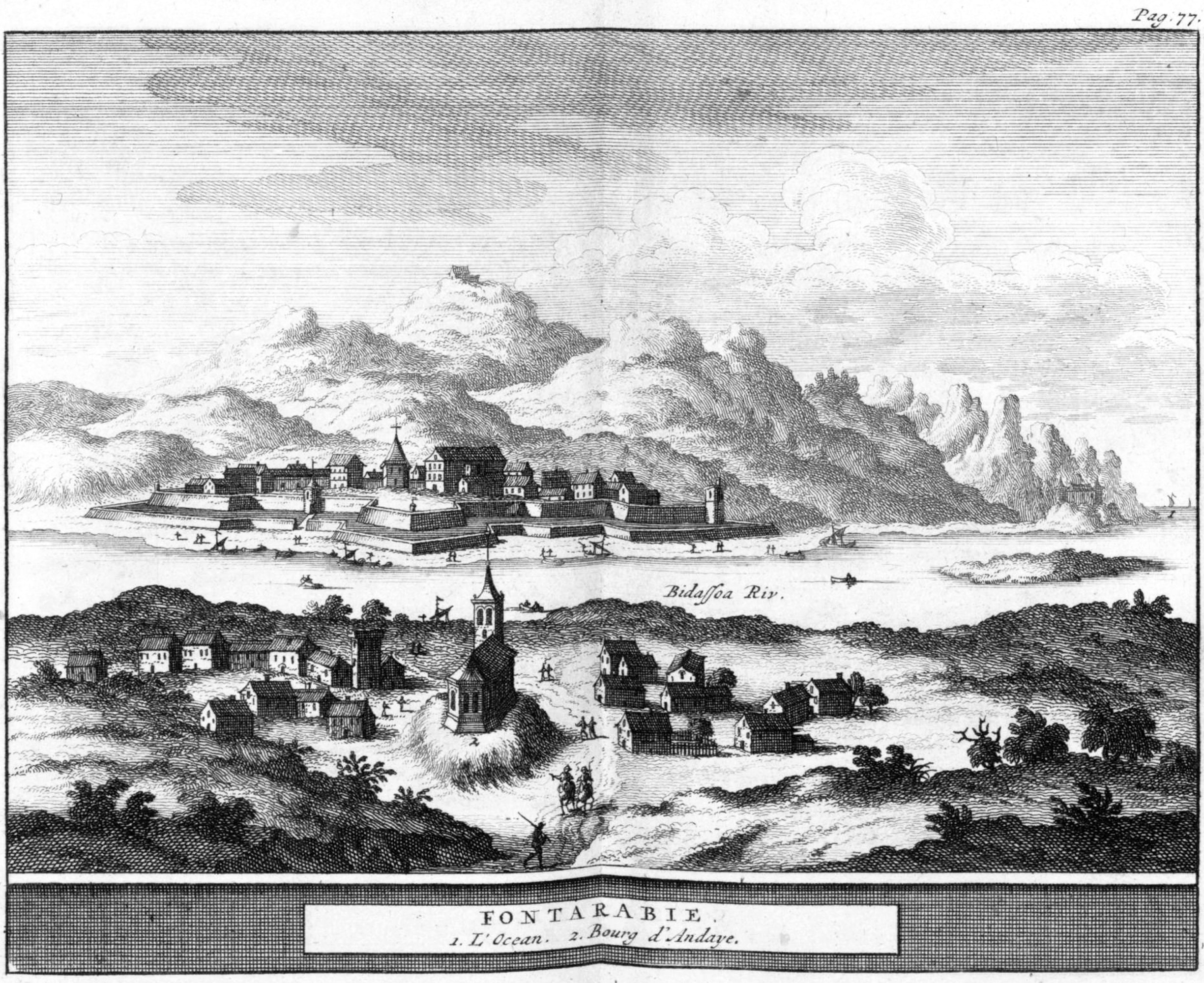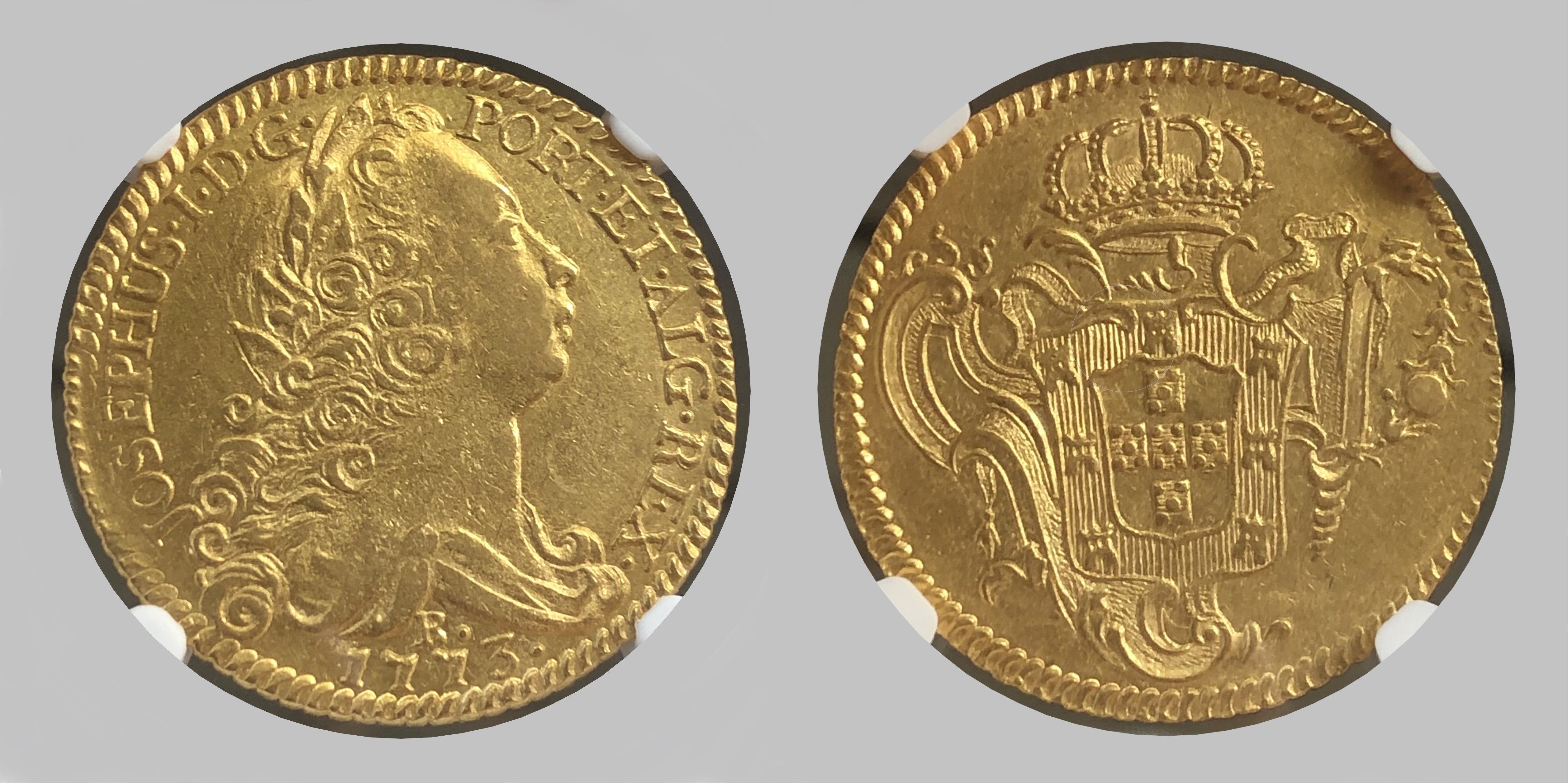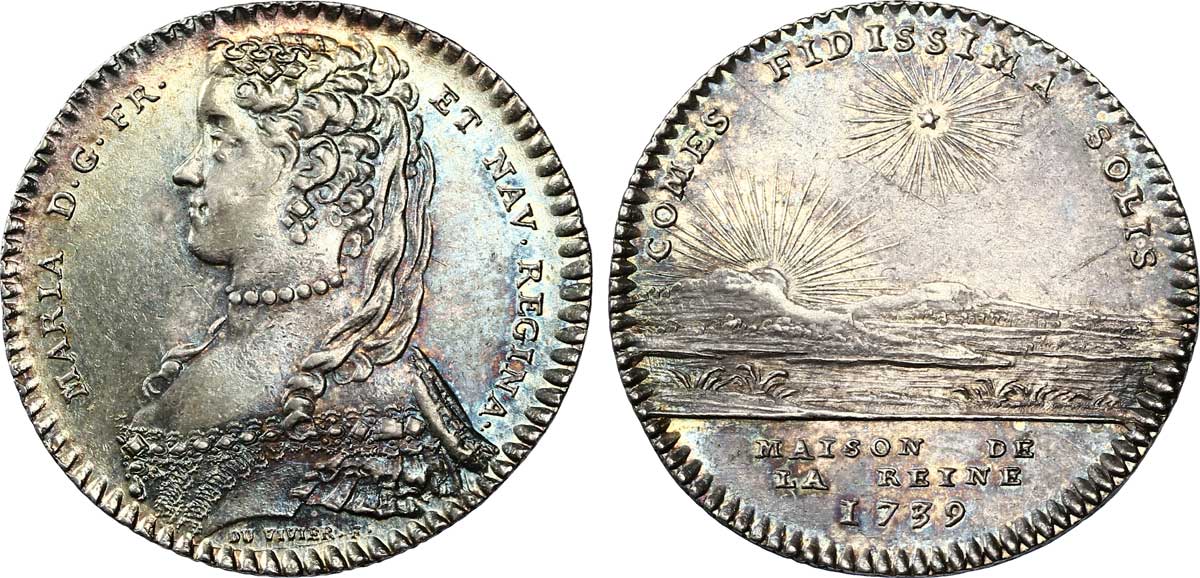|
Faisans
Pheasant Island (french: Île des Faisans/Île de la Conférence, es, Isla de los Faisanes, eu, Konpantzia, ) is an uninhabited river island in the Bidasoa river, located between France and Spain, whose administration alternates between the two nations. Etymology There are no pheasants on the island. It is proposed that the name could be a misinterpretation of some French word related to "passing" or "toll". The "Conference" name could come from the international meetings held there. History The most important historical event to have taken place on the island was the signing of the Treaty of the Pyrenees. This was the climax to a series of 24 conferences held between Luis Méndez de Haro, a grandee of Spain, and Cardinal Mazarin, Chief Minister of France, in 1659 following the end of the Thirty Years' War. A monolith was built in the centre of the island to commemorate the meeting. The island has also been used for several other royal meetings: *1659 – Louis XIV met ... [...More Info...] [...Related Items...] OR: [Wikipedia] [Google] [Baidu] |
Hendaye
Hendaye (Basque language, Basque: ''Hendaia'')HENDAIA Auñamendi Encyclopedia, Auñamendi Eusko Entziklopedia is a Communes of France, commune in the Pyrénées-Atlantiques Departments of France, department and Nouvelle-Aquitaine Regions of France, region of southwestern France.INSEE commune file /ref> The town, Metropolitan France's most southwesterly and a popular seaside tourist resort, stands on the right bank of the Bidassoa, River Bidassoa – which marks the France–Spain border, Franco-Spanish border – at the point where it empties into the Atlantic Ocean in the Northern Basque Country, French Basque Country. Hendaye has three distinguishable parts: ''la ville' ... [...More Info...] [...Related Items...] OR: [Wikipedia] [Google] [Baidu] |
Bidasoa
__NOTOC__ The Bidasoa (, ; french: Bidassoa, ) is a river in the Basque Country of northern Spain and southern France that runs largely south to north. Named as such downstream of the village of Oronoz-Mugairi (municipality of Baztan) in the province of Navarre, the river actually results from the merger of several streams near the village ''Erratzu'', with the stream Baztan that rises at the north-eastern side of the mount Autza (1,306 m) being considered the source of the Bidasoa. It joins the Cantabrian Sea (Bay of Biscay) between the towns of Hendaye and Hondarribia. The river is best known for establishing the borderline at its lower tract. This stretch is crossed not only by aircraft at low height but by important European communication axes, namely AP8 E5 E80 - E70 A63 (motorway, connection at the Biriatu toll), main roads N1 - N10 (connection at the roundabout of ''Saizar'' by the river) and major French and Spanish railway networks,— RENFE and SNCF. Besides thes ... [...More Info...] [...Related Items...] OR: [Wikipedia] [Google] [Baidu] |
Mariana Victoria Of Spain
pt, Mariana Vitória de Bourbon e Farnesefrench: Marianne Victoire d’Espagne , house = Bourbon , father = Philip V of Spain , mother = Elisabeth Farnese , birth_date = , birth_place = Royal Alcazar of Madrid, Madrid, Spain , death_date = , death_place = '' Barraca Real of Ajuda'', Lisbon, Portugal , burial_date = 17 January 1781 , burial_place = Pantheon of the House of Braganza, Monastery of São Vicente de Fora, Lisbon, Portugal , signature = Assinatura D. Mariana Vitória.svg Mariana Victoria of Spain ( pt, Mariana Vitória; 31 March 1718 – 15 January 1781) was an ''Infanta of Spain'' by birth and was later the Queen of Portugal as wife of King Joseph I. She acted as regent of Portugal in 1776–1777, during the last months of her husband's life and as advisor to her daughter, Maria I of Portugal, in her reign. Early life Mariana Victoria was born at the Royal Alcazar of Madrid in Madrid and was given the same forenames as her pate ... [...More Info...] [...Related Items...] OR: [Wikipedia] [Google] [Baidu] |
Meeting On The Isle Of Pheasants
The Meeting on the Isle of Pheasants on 7 June 1660 was part of the process ending the Franco-Spanish War (1635–59); the Spanish princess Maria Theresa of Spain entered France for her marriage to Louis XIV of France, and said goodbye to her father Philip IV of Spain and much of the Spanish court. This had been agreed at an earlier meeting on the island, on 7 November 1659, which saw the signing of the Treaty of the Pyrenees by the chief ministers. Pheasant Island lies on the Bidasoa, river Bidasoa that is still the border between France and Spain, and the tiny island remains joint territory to this day. Those present included, from Spain, Maria Theresa, the Luis Méndez de Haro, Count-Duque of Olivares, chief minister, as well as one of the organisers of the meeting, and the painter Diego Velázquez, who was then sixty years of age. Such grand meetings between reigning monarchs had become increasingly rare in the 17th century. On the French side, there was the widowed queen A ... [...More Info...] [...Related Items...] OR: [Wikipedia] [Google] [Baidu] |
Cardinal Mazarin
Cardinal Jules Mazarin (, also , , ; 14 July 1602 – 9 March 1661), born Giulio Raimondo Mazzarino () or Mazarini, was an Italian cardinal, diplomat and politician who served as the chief minister to the Kings of France Louis XIII and Louis XIV from 1642 to his death. In 1654, he acquired the title Duke of Mayenne and in 1659 that of 1st Duke of Rethel and Nevers. After serving as a papal diplomat for Pope Urban VIII, Mazarin offered his diplomatic services to Cardinal Richelieu and moved to Paris in 1640. After the death of Richelieu in 1642, Mazarin took his place as first minister and then of Louis XIII in 1643. Mazarin acted as the head of the government for Anne of Austria, the regent for the young Louis XIV. Mazarin was also made responsible for the king's education until he came of age. The first years of Mazarin in office were marked by military victories in the Thirty Years' War, which he used to make France the main European power and establish the Peace of West ... [...More Info...] [...Related Items...] OR: [Wikipedia] [Google] [Baidu] |
Irun
Irun ( es, Irún, eu, Irun) is a town of the Bidasoaldea region in the province of Gipuzkoa in the Basque Country (autonomous community), Basque Autonomous Community, Spain. History It lies on the foundations of the ancient Oiasso, cited as a Ancient Rome, Roman-Vascones, Vasconic town. During the Spanish Civil War, the city was site of the 1936 Battle of Irun, which ended with a strategic victory for the Nationalist faction (Spanish Civil War), Nationalist forces. Location and transport One of the biggest towns in Gipuzkoa, its location on the France–Spain border, border between Spain and France, across the Bidasoa river from Hendaye), has made Irun into a commercial and logistic centre. Irun railway station is a major break-of-gauge where the SNCF Rail tracks, rails meet the broad gauge Renfe ones. Currently Irun has a fairground with a modern exhibition and telecommunication facilities, just some 100 metres away from the actual border at the Santiago Bridge (river Bi ... [...More Info...] [...Related Items...] OR: [Wikipedia] [Google] [Baidu] |
Joseph I Of Portugal
Dom Joseph I ( pt, José Francisco António Inácio Norberto Agostinho, ; 6 June 1714 – 24 February 1777), known as the Reformer (Portuguese: ''o Reformador''), was King of Portugal from 31 July 1750 until his death in 1777. Among other activities, Joseph was devoted to hunting and the opera. Indeed, he assembled one of the greatest collections of operatic scores in Europe. His government was controlled by Sebastião José de Carvalho e Melo, 1st Marquis of Pombal. The third child and second son of King Dom John V, Joseph became his father's heir as an infant when his older brother, Dom Pedro, Prince of Brazil, died. In 1729 he married Infanta Mariana Victoria, the eldest daughter of King Don Philip V of Spain, and Joseph's sister Infanta Barbara married Mariana Victoria's half-brother Prince Don Ferdinand (the future King Don Ferdinand VI of Spain). These marriages were known as the Exchange of the Princesses. Joseph and Mariana Victoria had four daughters. With the dea ... [...More Info...] [...Related Items...] OR: [Wikipedia] [Google] [Baidu] |
Marie Leszczyńska
Maria Karolina Zofia Felicja Leszczyńska (; ; 23 June 1703 – 24 June 1768), also known as Marie Leczinska, was Queen of France as the wife of King Louis XV from their marriage on 4 September 1725 until her death in 1768. The daughter of Stanisław Leszczyński, the deposed King of Poland, and Catherine Opalińska, her 42-years and 9 months service was the longest of any queen in French history. A devout Roman Catholic throughout her life, Marie was popular among the French people for her numerous charitable works and introduced many Polish customs to the royal court at Versailles. She was the grandmother of the French kings Louis XVI, Louis XVIII and Charles X. Early life Born as a member of the House of Leszczyński, Maria Karolina Zofia Felicja Leszczyńska ( Wieniawa) was the second daughter of Stanislaus I Leszczyński and his wife, Countess Catherine Opalińska. She had an elder sister, Anna Leszczyńska, who died of pneumonia in 1717. Maria's early life was troubled ... [...More Info...] [...Related Items...] OR: [Wikipedia] [Google] [Baidu] |
Louis XV Of France
Louis XV (15 February 1710 – 10 May 1774), known as Louis the Beloved (french: le Bien-Aimé), was King of France from 1 September 1715 until his death in 1774. He succeeded his great-grandfather Louis XIV at the age of five. Until he reached maturity (then defined as his 13th birthday) on 15 February 1723, the kingdom was ruled by his grand-uncle Philippe II, Duke of Orléans, as Regent of France. Cardinal Fleury was chief minister from 1726 until his death in 1743, at which time the king took sole control of the kingdom. His reign of almost 59 years (from 1715 to 1774) was the second longest in the history of France, exceeded only by his predecessor, Louis XIV, who had ruled for 72 years (from 1643 to 1715). In 1748, Louis returned the Austrian Netherlands, won at the Battle of Fontenoy of 1745. He ceded New France in North America to Great Britain and Spain at the conclusion of the disastrous Seven Years' War in 1763. He incorporated the territories of the Duchy of Lorra ... [...More Info...] [...Related Items...] OR: [Wikipedia] [Google] [Baidu] |
Philip IV Of Spain
Philip IV ( es, Felipe, pt, Filipe; 8 April 160517 September 1665), also called the Planet King (Spanish: ''Rey Planeta''), was King of Spain from 1621 to his death and (as Philip III) King of Portugal from 1621 to 1640. Philip is remembered for his patronage of the arts, including such artists as Diego Velázquez, and his rule over Spain during the Thirty Years' War. By the time of his death, the Spanish Empire had reached approximately 12.2 million square kilometers (4.7 million square miles) in area but in other aspects was in decline, a process to which Philip contributed with his inability to achieve successful domestic and military reform. Personal life Philip IV was born in the Royal Palace of Valladolid, and was the eldest son of Philip III of Spain, Philip III and his wife, Margaret of Austria (1584–1611), Margaret of Austria. In 1615, at the age of 10, Philip was married to 13-year-old Elisabeth of France (1602–1644), Elisabeth of France. Although the ... [...More Info...] [...Related Items...] OR: [Wikipedia] [Google] [Baidu] |
Louis, Dauphin Of France (1661–1711)
Louis, Dauphin of France (1 November 1661 – 14 April 1711), commonly known as Grand Dauphin, was the eldest son and heir apparent of King Louis XIV and his spouse, Maria Theresa of Spain. He became known as the Grand Dauphin after the birth of his own son, Louis, Duke of Burgundy, the Petit Dauphin. As he and his son died before his father, they never became king. His grandson instead became King Louis XV at the death of Louis XIV, while his second son inherited the Spanish throne as Philip V through his grandmother. Biography Louis was born on 1 November 1661 at the Château de Fontainebleau, the eldest son of Louis XIV of France and Maria Theresa of Austria (who were double first-cousins to each other). As a '' Fils de France'' ("Son of France") he was entitled to the style of ''Royal Highness.'' He was baptised on 24 March 1662 at the chapel of the Château de Saint-Germain-en-Laye and given his father's name of Louis. At the ceremony, the Cardinal de Vendôme and the Princ ... [...More Info...] [...Related Items...] OR: [Wikipedia] [Google] [Baidu] |
Maria Theresa Of Spain
Maria Theresa of Spain ( es, María Teresa de Austria; french: Marie-Thérèse d'Autriche; 10 September 1638 – 30 July 1683) was Queen of France from 1660 to 1683 as the wife of King Louis XIV. She was born an Infanta of Spain and Portugal as the daughter of King Philip IV and Elisabeth of France, and was also an Archduchess of Austria as a member of the Spanish branch of the House of Habsburg. Her marriage in 1660 to King Louis XIV, her double first cousin, was arranged with the purpose of ending the lengthy war between France and Spain. Famed for her virtue and piety, she saw five of her six children die in early childhood, and is frequently viewed as an object of pity in historical accounts of her husband's reign, since she was often neglected by the court and overshadowed by the King's many mistresses. Without any political influence in the French court or government (except briefly in 1672, when she was named regent during her husband's absence during the Franco-Dutch ... [...More Info...] [...Related Items...] OR: [Wikipedia] [Google] [Baidu] |









